Paddler Rescued - Thanks to the NSRI and to SafeTRX
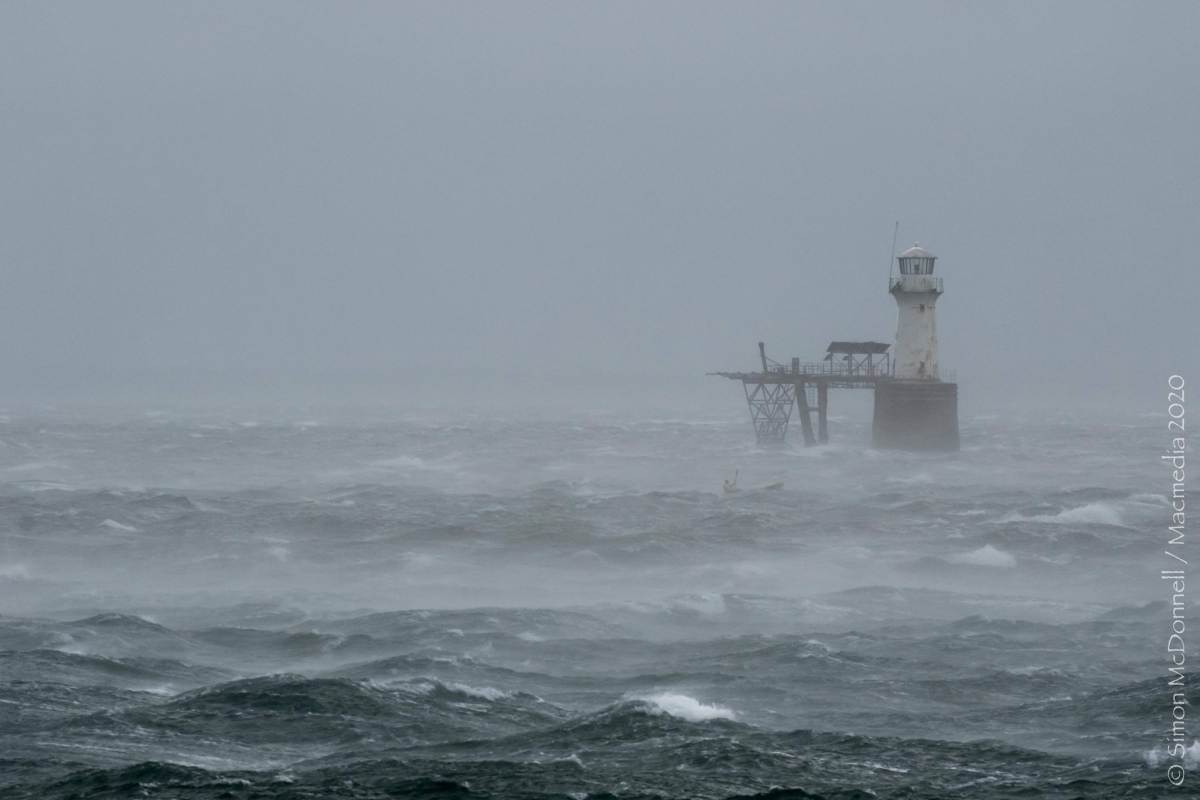 Gale force downwind - a paddler passes Roman Rock Lighthouse on the Reverse Miller's Run in Cape Town
Credits: Simon McDonnell
Gale force downwind - a paddler passes Roman Rock Lighthouse on the Reverse Miller's Run in Cape Town
Credits: Simon McDonnell
When the NSRI found Duncan MacDonald, he was approximately 6km off Smitswinkel Bay, drifting rapidly further offshore. Gale-force squalls whipped sheets of spray off the waves, reducing visibility almost to nothing.
What Happened?
Given the small size of the surfski community, there’s always intense interest whenever there’s a rescue. What happened? What did they do wrong? What can we learn from it?
Clearly there are lessons to be learnt from any mishap – so here’s a description of what happened, shared with the permission and cooperation of the folks involved in the hope that we might all learn from this incident.
Reverse Miller’s Run
During the morning of 9 July 2020, a constant stream of paddlers had launched off the beach at Fish Hoek to paddle with the wind and waves to Miller’s Point, just under 11km down the coast. Hundreds of paddlers cover this route, the “Reverse Miller’s Run” every winter, setting off whenever a cold front triggers the NW wind.
On this day, the wind had been extreme: gale-force at times, 30kt gusting to 40 or 45kt. But the NNW direction had been perfect, and at 9am the record for the run had been broken by Jasper Mocke, in a time of 36:55. (I too broke my personal record, in a much more pedestrian 42:58.)
By 1pm, the wind had dropped to around 15kt, gusts of 20-25kt. The direction had changed slightly, the weather station at Fish Hoek showing that it was more NW that the earlier NNW. The forecast had predicted that it would swing due west, but it wasn’t anything like that yet.
Duncan MacDonald, Thomas Altmann and Michael Thorpe set off into the relatively benign conditions. Knowing that the wind was forecast to swing west later in the afternoon, they initially hugged the coast, bearing right out of Fish Hoek bay to get on a more inshore line than usual.
“The wind direction was fine as we exited the bay,” said Altmann. “There was none of the side-on chop that you sometimes get.”
The further they got from shore, the bigger the waves and soon they were surfing gleefully down the faces…
Being the least experienced of the three paddlers, MacDonald was keeping an eye out for the two in front. “I deliberately stayed well inside Michael,” he said. “So, I thought I was on a safe line.”
Conditions Change
Past the lighthouse, the men had the finish at Miller’s Point in sight, when suddenly the wind strength increased dramatically. At the same time, the shore faded from view, hidden by a combination of the squalls, mist and rain…
What the men didn’t at first appreciate was how much the wind direction had changed as well.
Both MacDonald and Altmann commented that as soon as the conditions changed, they had instinctively altered course towards land – or so they thought. In fact, they were fooled by the wind direction: although they were now paddling partly side-on to the wind, the change in the wind direction meant that at best they were paddling parallel to the shore, not towards it.
“Our depth perception was affected by the bad visibility,” said MacDonald. “I certainly didn’t realize how far offshore we were.”

The paddlers' tracks as shown on Strava
Miller’s Point
After catching a brief glimpse of the buildings just before Miller’s Point, Altmann realized that he was on the verge of over-shooting the finish.
Turning hard right, he battled, side-on to the wind and waves, to fight his way to shore. “If you zoom in on the Strava track, you can see where the wind blew me off course every time a squall came through,” he said.
At the ramp, Vincent Cicatello was waiting for the paddlers to arrive. Anxious, he put a call through to the NSRI. He could see two of the paddlers, but they were in the wrong place and were overdue. He wasn’t sure, he told the NSRI, but there might be a problem.
Altmann and then Thorpe finally made it around the breakwater – but MacDonald was nowhere in sight and they decided to call the NSRI to raise the alarm.
SafeTRX
At almost the same time, the NSRI Emergency Operations Centre (EOC) received an emergency notification from SafeTRX – a mobile phone tracking app that many of the paddlers use.
MacDonald, realizing that he’d passed Miller’s Point and finding himself unable to make any headway towards land had made the decision to call for help and had triggered the app.
“From my GPS I knew that I had travelled 11km,” he said, “and that meant I was past Miller’s Point – although I couldn’t see it.”
Things started to change rapidly: the coast curves south at that point and he was being blown further offshore. Conditions were becoming more extreme, squall following squall as he neared the area known by the paddlers as “hurricane alley”, a notorious area where westerly winds are funneled into howling torrents between two peaks.
“My choices were to continue to try to paddle in and perhaps land at Smitswinkel Bay, or to call for help,” he said. While he was able to make some headway in the lulls, he could hardly hang to his paddle when the squalls hit. Rather than exhaust himself, he opted to make the emergency call.
He tapped the "Call for Help" button on the app and within moments was through to the NSRI Ops Room. They told him they were activating NSRI Simon's Town and rang off. He'd had the app on the lowest power setting, updating every 10 minutes, but it now automatically switched to the "Alert and Track" mode, updating at 5min intervals.
"Hitting the button was simple," he said. "The call was ok, hearing them was fine, but with the wind noise, they struggled to hear me."
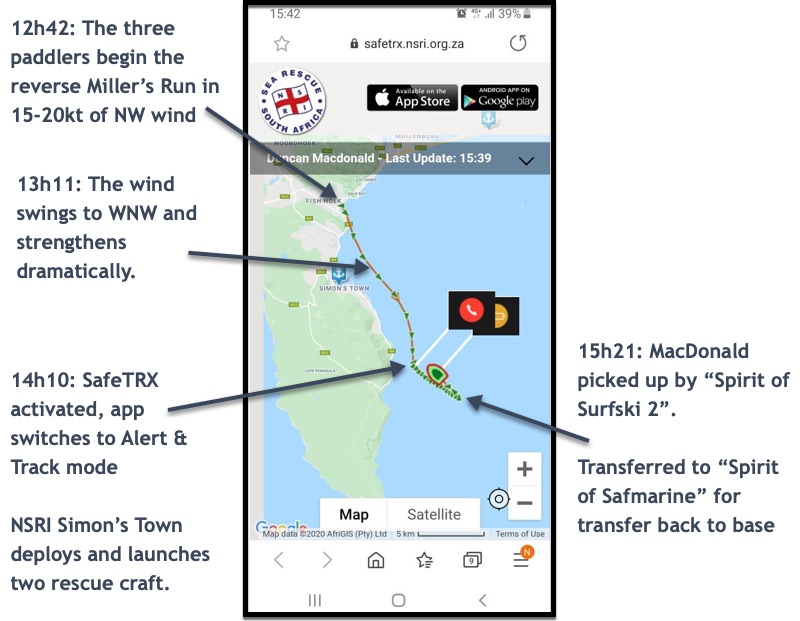
Duncan MacDonald's track as seen on his buddy's phone
At that point, his approach became one of survival. “I wanted to stay on the boat – for warmth and to be more visible,” he said. “The Blue-fin is very stable, and with my legs over the side, I could sit there forever.”
And it felt like forever. “I lost all sense of time,” he said. “In the moment it felt like time stood still.
“But it was probably around 45 minutes later when I saw the NSRI rescue boat approaching.”
By that time, he’d drifted approximately 6km off Smitswinkel Bay in the midst of growing seas and sheeting squalls.
The last 400m
“Your emotions are interesting out there,” he said. “After I’d called for help, I wasn’t really worried – until they went past without seeing me! Then it was ‘what if they can’t find you…’ There’s that doubt in your mind.”
At that moment he was on the phone to Altmann. Altmann relayed the message to the NSRI who then called MacDonald directly and he was able to guide them to his location.
The NSRI crew loaded MacDonald onto the “Spirit of Surfski 2” RIB and took him across to the big "Spirit of Safmarine" rescue craft where he was transferred for the trip back to the Simon’s Town base. Having been warmed up and assessed, no further medical treatment was necessary.
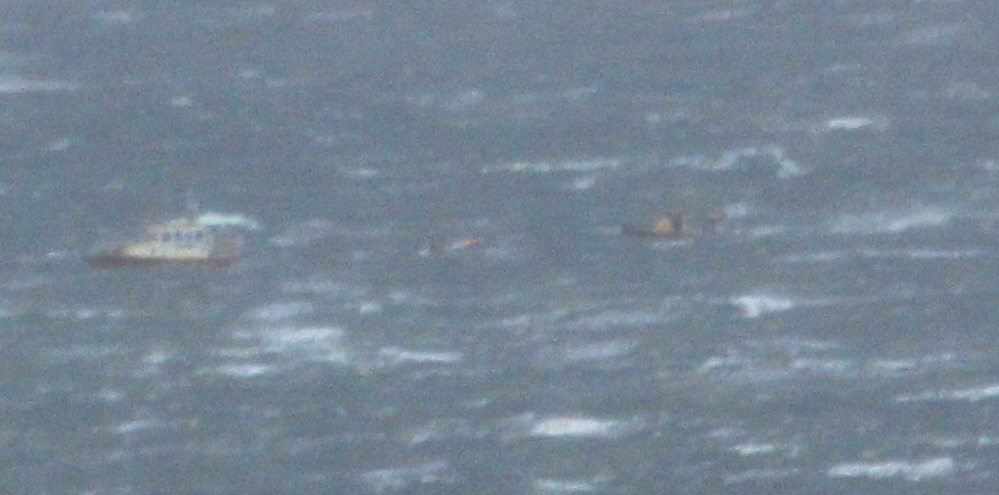
The two NSRI rescue craft find the surfski (centre) some 6km out to sea (Pic: Douglas Drysdale)
Reflections
A day later, MacDonald was thankful to be alive.
“Obviously you feel stupid and your ego is dented – but if this story can be of use to the rest of the paddling community, so much the better,” he said.
“Hindsight is 20:20 of course!”
Some of the things that helped were:
- Because he’d been working in his office that morning, his phone was fully charged when he set off. Had it only been on half-charge, it would probably have died before he was found.
- Months ago, he threw an energy gel into his PFD pocket. After he called for help, he ate it, and drank some of the water that he’d also taken with him. “I really think that helped keep me alert,” he said.
Other thoughts:
- MacDonald emphasizes the importance of listening to more experienced paddlers. “Had I seen the message from one of the senior paddlers to say that he wasn’t going because of the forecast, I wouldn’t have gone either!” he said. But he hadn’t seen the note on the WhatsApp group.
- Having done some 30 Miller’s Runs this year, he felt he was probably overconfident.
- The stability of the Fenn Blue-fin was key. “I can’t imagine trying to stay upright on an elite ski, even the Swordfish,” he said.
- “I’d definitely take more safety gear another time,” he said. “I can see why guys carry a VHF or other backup.”
- Recognise that you're in trouble and call earlier rather than later, while you still have the energy and dexterity to use the phone (your fingers will be the first part of your body to go numb as you get cold.)
In terms of safety gear, McDonald was equipped with:
- PFD
- Leg leash
- Paddle leash
- Warm top
- Water and an energy gel
- Mobile Phone (iPhone XS) in a waterproof pouch
McDonald commented, “you often hear the Reverse Miller’s touted as the ‘safe’ run, ideal for beginners. But actually, because you’re being blown offshore, it’s a lot more dangerous.”
Key Skill
Dawid Mocke, a hugely experienced, ex-surfski World Series Champion said, “One key skill here is the ability to turn broadside and paddle into a strong wind. My estimation is that 30kt is probably the limit for most paddlers.”
Peter Cole commented, “One of the things that people don’t realize is that the wind is much gustier on a reverse – on a regular Miller’s Run, the wind strength stays pretty much constant, but on a reverse, the gusts can be twice the average speed or more. That makes it much more difficult and dangerous.”
Layers of Safety
It should be noted that while SafeTRX worked brilliantly on this occasion, no single safety device should be totally relied upon. The mobile phone relies on its battery and on a strong signal. When did you last check that your phone was on a 100% charge before paddling?!
Which is why, especially in those conditions, I also carry pencil flares and a DSC-capable VHF radio.
Click here for a discussion of surfski safety.
The Hard Questions
It’s easy to point fingers at these paddlers and to ask why they were out there in such extreme conditions.
But if we ask them that question – we need to ask ourselves too.
Two weeks ago, dozens of paddlers did the reverse Miller’s in similar gale-force conditions. One of them, Kim van Gysen, broke a rudder cable near the lighthouse. In 30-40kt winds. Fortunately, she’s an extremely experienced surf lifesaver – and she was paddling with her husband Simon, who’s unarguably one of the best surfski paddlers in the world. They swapped boats and he managed to make his way to the finish with steering to one side only – in an utter maelstrom. If it had been anyone else, guess what? The NSRI would have been out there searching for them.
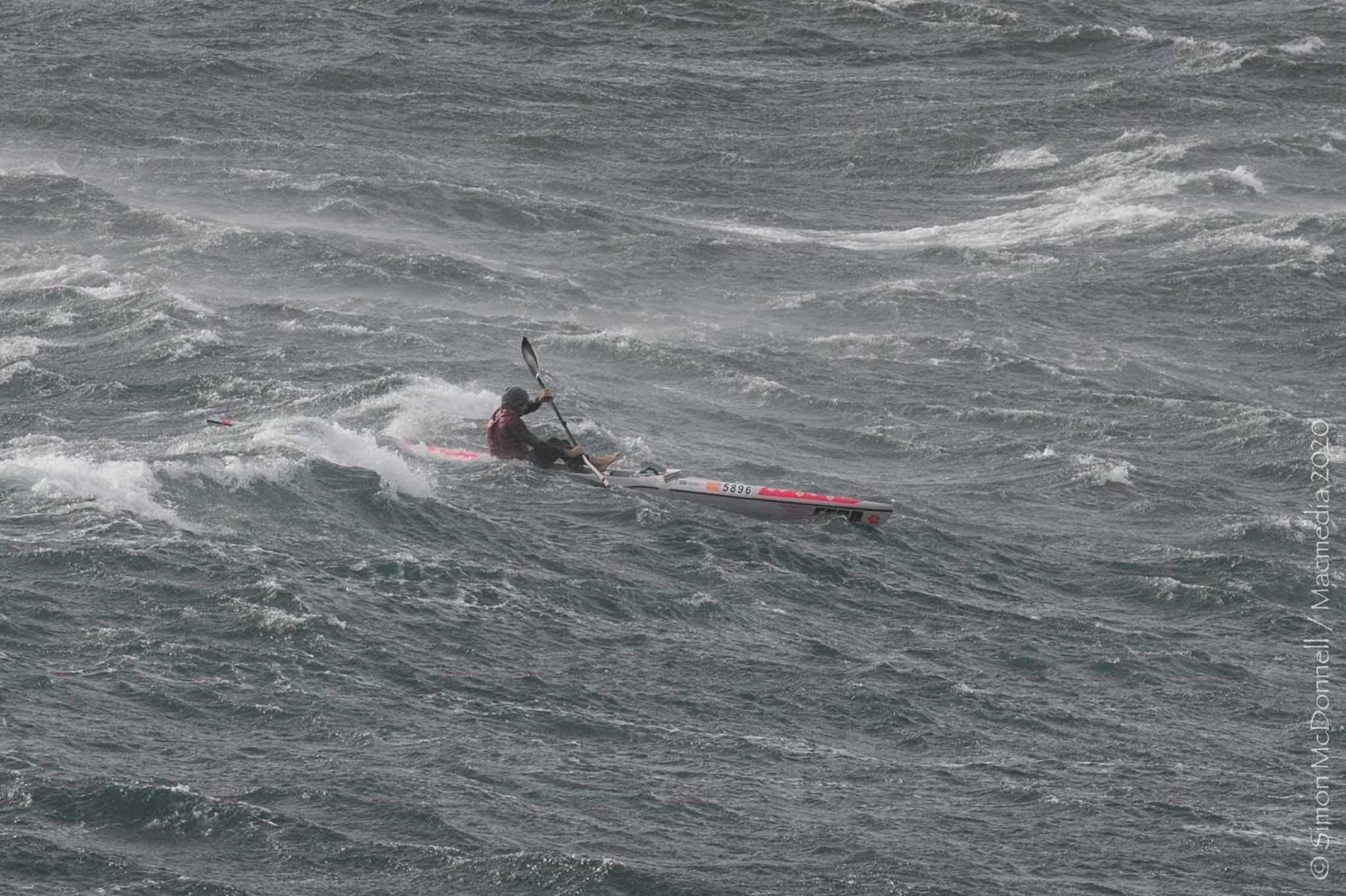
Simon van Gysen - fighting to control the surfski with a broken rudder line...
I paddled that day as well – and if I’m honest, I had a couple of moments where I was at the edge of my ability to cope with the conditions.
And on the morning of Duncan MacDonald’s rescue, dozens of paddlers – including me – again ventured out into the 30-40kt winds – a couple of the gusts that hit me were so strong that all I could do was hang onto the paddle and brace. I did my record time for the reverse – yippee – but was it worth it?
The surfski community has come in for a lot of flak on social media in the last few days as a result of this rescue, most of it, admittedly from keyboard warriors who wouldn’t know a surfski if it bit them.
But here’s the thing:
- NSRI crews are volunteers; they’re not paid to come rescue us. They come from all walks of life and are just as affected by the pandemic as everyone else.
- When the crew is on board the rescue boat, they’re in a confined space. No social distancing for them.
- On the rescue boat, it’s not that difficult to injure yourself. The very last thing a crewperson should be doing at the moment is going to a hospital – they’re all crowded with covid-19 patients.
- Whenever there’s a call-out for a surfski paddler, the NSRI makes sure that an ambulance is on standby. It’s likely, after all, that there may be a patient with hypothermia.
So, we need to take a hard look at ourselves and ask whether gale-force downwinds are appropriate right now given the circumstances of the coronavirus pandemic. Do we have the right to put the NSRI at risk and to take up stretched medical resources at this time?
I’m particularly conflicted: my life revolves around paddling downwind and the thought of not going out when the conditions are so wild goes against my very reason for living…
But it’s clear to me. I’ve decided that I don’t have the right to put others at this risk at this time for the sake of my sport. I’m not going out again in extreme conditions until the pandemic is over. It breaks my heart – but it’s a very small sacrifice in the greater scheme of things. (On the other hand, my family, who always watch SafeTRX anxiously when I go out – apparently, they don’t have the same faith in my ability that I do – are delighted.)
This isn’t to say that I won’t go out at all – in milder conditions I’ll certainly be out there. But pushing the limits? No, not until the pandemic is over and I’m not subjecting the NSRI (and all the other emergency services) to the out-of-the-ordinary risks of this pandemic time.
Thanks to the NSRI
“I can’t praise the NSRI too much,” said MacDonald. “Every aspect of the rescue, from the communication to the empathy and care that they took of me. They were superbly professional from start to finish. And when you consider that they’re a bunch of volunteers supported solely by fund-raising…”
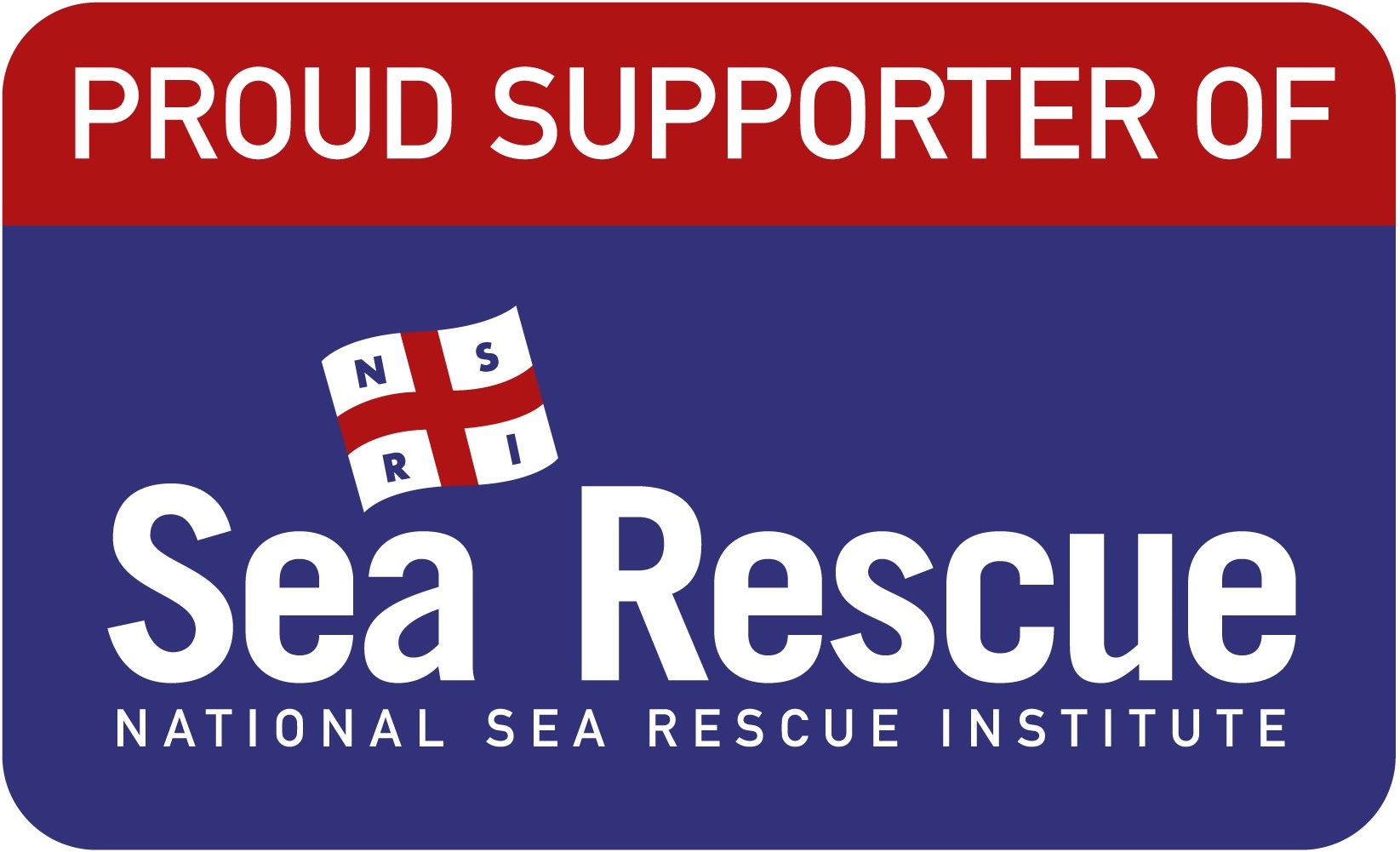
NSRI Fund Raising
Since a particularly grueling rescue during a race in December 2009, South African surfski paddlers have contributed some R6,7million through a special fund-raising account to the NSRI.
If you would like to support this initiative, please call Lianne at the NSRI Call Centre on 021 430 4701 or send her an email to This email address is being protected from spambots. You need JavaScript enabled to view it.. Please let Lianne know that you would like to support the Surfski initiative.
You could win one of five R10 000 prizes each month as well as a R100 000 in the annual December draw. For R50 per month, you will get 2 tickets giving you 10 entries each month and 2 entries into the December R100 000 draw.

